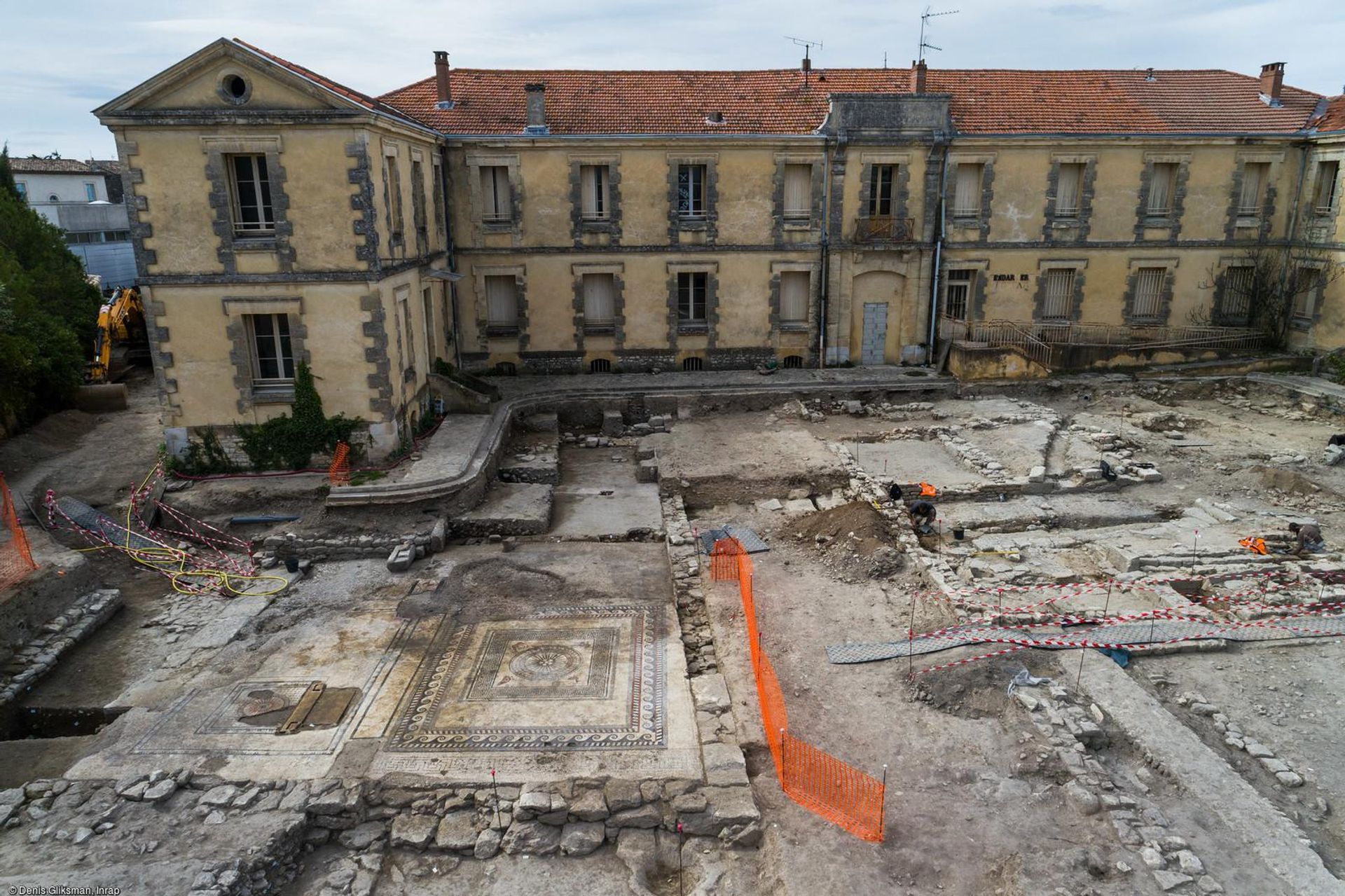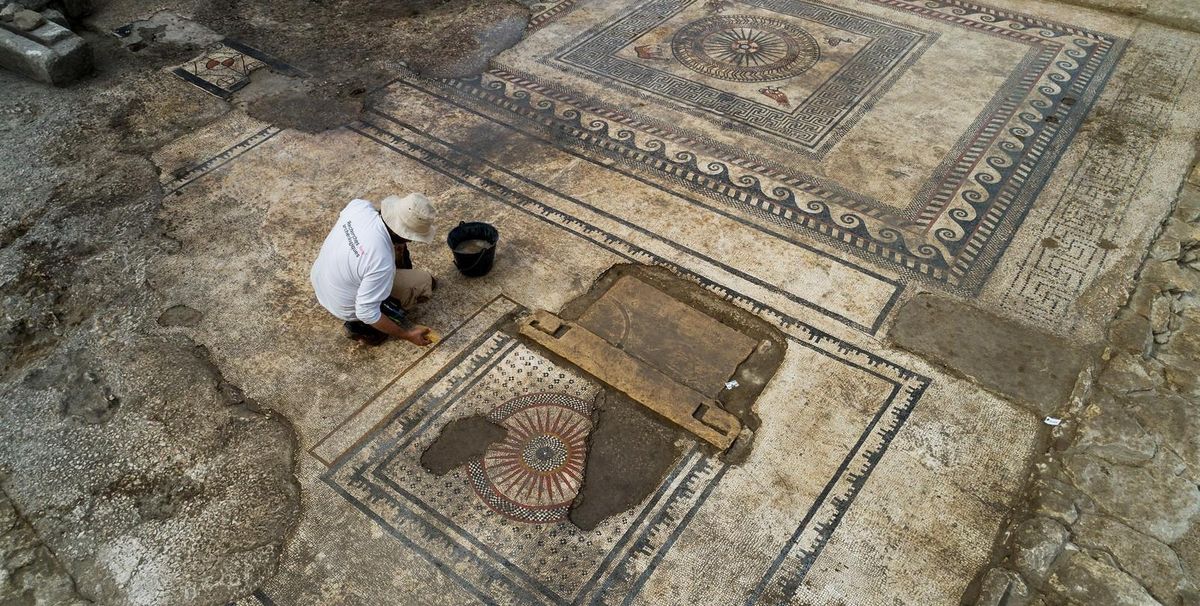The decision by local authorities to transfer a Roman mosaic from the town of Uzès to nearby Nimes has sparked protests from local heritage groups who are concerned that the ancient treasure will not return to the southern French town. The 60 sq. m mosaic pavement, part of a first-century BC Roman town called Ucetia, will be removed to make way for a new boarding school on the ancient site.
Prima Vera, a local campaign group, has launched an online petition calling for the mosaic to be restored on site with the backing of other heritage associations such as Uzège-Pont du Gard Durable. But archaeologists from the French National Institute for Archaeological Research (known as Inrap) began transferring parts of the mosaic last week to a special storage facility managed by the culture ministry in Nimes.

A spokesman for Prima Vera tells The Art Newspaper: “We have [since] been successful in making the regional and local authorities publicly state that the mosaic will return to Uzes, and will be installed in a dedicated place.” The final location will be determined in consultation with local associations, regional and local councils, and other public bodies, he says.
A statement issued by the Occitanie regional council says that the mosaic will be cleaned, studied and restored in the Drac (government agency) base in Nimes, with the conservation process expected to last around two years. “It will then be returned to Uzès and presented to the public,” it adds.
Phillipe Cayn, the archaeologist in charge of the project, told Agence France-Presse: “This mosaic is very impressive because of its large size, its good state of conservation and the motifs which combine classical geometric shapes and animals [owl, duck and an eagle].” This kind of mosaic usually dates from the first or second centuries, he adds, but this one dates back to around 200 years before which is surprising.


